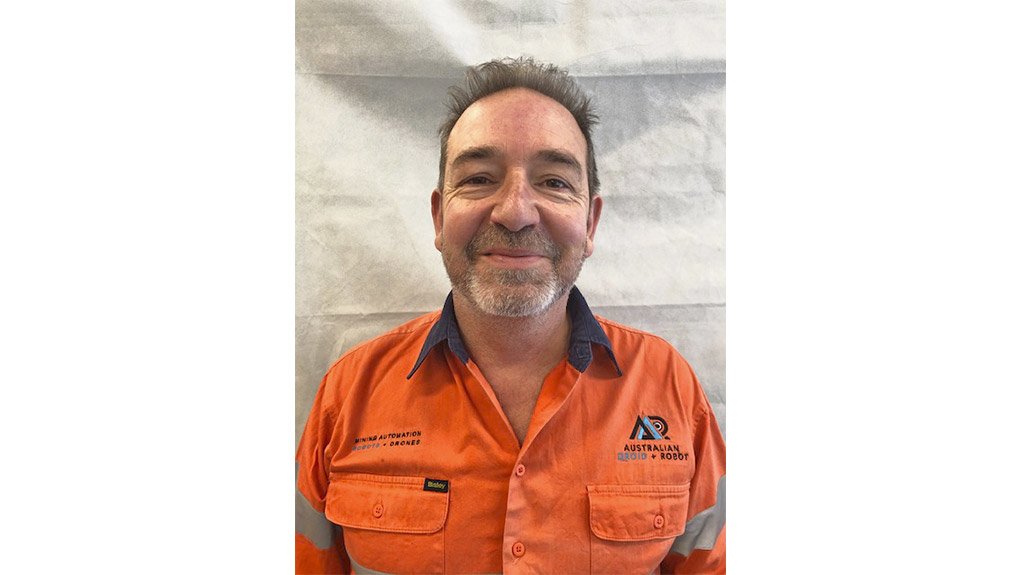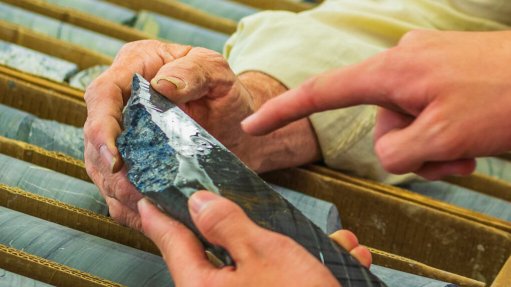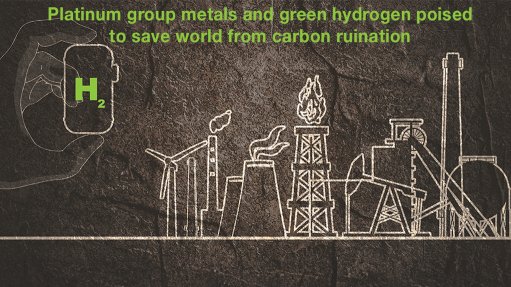Mine Automation Expert Believes New Technology Supports Jobs Rather Than Removing Them
This article has been supplied as a media statement and is not written by Creamer Media. It may be available only for a limited time on this website.
One of Australia's leading innovators in mine site automation suggests the technology is more likely to support the jobs of workers rather than take them away.
Speaking ahead of Asia Pacific's International Mining Exhibition (AIMEX) and conference in Sydney from August 27-29, Dr Joe Cronin said the use of teleoperation technologies and robots in underground mines creates much more efficiency and output but will still need humans to operate the system.
"I'm yet to be convinced in Australia that automation has ever put anyone out of a job," Dr Cronin said.
"You can put a human into a machine that's got sloppy steering, sloppy brakes, sloppy hydraulics so that the bucket and the boom move slowly and it can be completely clapped out.
"But when the computer's driving the machine it's looking for all of that and if it sees a slow response in the steering or the braking or the boom movements it'll just shut down. So the result is that you need to maintain your fleet at a higher level."
Dr Cronin was responsible for the implementation of autonomous LHDs at Northparkes mine in Central NSW where 100% of the production from the E48 Block Cave is produced by automated loaders.
"In the case of Northparkes, I think we had eight operators per shift. Four shifts, 32 operators and about three technicians on a shift to support the automation system.
"We've still got three operators upstairs each driving two or three machines. And then you've got the maintenance people on the machines.
“We're now seeing enough of these installations to know that roughly digitisation gives you a 15% situational awareness of your position tracking and visualisation and scheduling gives you a 15 to 20% increase in productivity and then having automation and being able to run over shift change gives you another 15 to 20%.
“We are now seeing that a mine controlled by a computer or a mine controlled by humans who have real-time information actually runs a lot more efficiently”
The teleoperation technologies allow operators to control a vehicle that is underground and is kilometres away. In the case of some mines in South America such as Codelco, the distance between operator and machine can be up to 30 or 40 kilometres but latency can be a problem.
Dr Cronin said as the internet gets better theoretically you will be able to control a vehicle from anywhere else in the world.
"It's actually interesting because when they were remotely exploring the moon, the latency between Earth and the Moon was roughly similar to what some of the mines are experiencing over the internet currently.
"So yes latency is a big issue with underground mines.”
During his session on Day One of AIMEX Dr Cronin will draw on his experiences of working with the U.S. Army bomb disposal unit and how, for him, automation is all about building a system that removes the need to put humans in harm's way.
"While working for the U.S. Army EOD force you understand they can’t eliminate the threat and they can't substitute the threat because it's there. They can try and engineer a solution, by building a bunch of armour around a vehicle or putting on bomb suits which is pretty useless. So the best way is to just do it remotely.," Dr Cronin explained.
"They've invested a fortune in developing that technology and it's extraordinarily effective.
"The sensors on these robots now, the range of the robots, the situational awareness and instead of being right there exposed to the hazard and having that pressure and the fear and trying to think clearly about how you approach the task, the officers are just sitting in a vehicle some distance away relaxed and if something goes horribly wrong they just lose the robot."
With systems improving all the time, Dr Cronin believes it won't be long before companies can avoid putting people at risk in an underground mine.
"I'm happy to say I was down Northparkes a couple of weeks ago with our new robot and we're not perfect yet but we definitely have now got the capability where there is no excuse for anyone to put themselves in harm's way.
"I get very passionate about it but we still have to shut down automation to send humans in to do inspections and sampling and mineralogy.
"I think the next wave of robotics is going to be much more around the scanning of mines, inspecting mines, doing remote sampling and remote convergence monitoring. There's a second wave of robots that will be coming in the next five to six years."
Dr Cronin is one of the speakers from the AIMEX free-to-attend conference, which is sponsored by Davey Bickford Enaex and will see more than 6000 mining industry professional and over 500 exhibitors attend across the three days.
Five of Australia’s biggest mining companies, Centennial Coal, Glencore, Mach Energy, Whitehaven Coal and Yancoal will also, for the first time, take part in AIMEX in the Mining Pavilion to outline their own enterprises, connect with suppliers and drive recruitment strategies.
Registration for AIMEX to be held Sydney’s Showgrounds across three days from August 27-29 is free and can be completed by visiting aimex.com.au.
Comments
Press Office
Announcements
What's On
Subscribe to improve your user experience...
Option 1 (equivalent of R125 a month):
Receive a weekly copy of Creamer Media's Engineering News & Mining Weekly magazine
(print copy for those in South Africa and e-magazine for those outside of South Africa)
Receive daily email newsletters
Access to full search results
Access archive of magazine back copies
Access to Projects in Progress
Access to ONE Research Report of your choice in PDF format
Option 2 (equivalent of R375 a month):
All benefits from Option 1
PLUS
Access to Creamer Media's Research Channel Africa for ALL Research Reports, in PDF format, on various industrial and mining sectors
including Electricity; Water; Energy Transition; Hydrogen; Roads, Rail and Ports; Coal; Gold; Platinum; Battery Metals; etc.
Already a subscriber?
Forgotten your password?
Receive weekly copy of Creamer Media's Engineering News & Mining Weekly magazine (print copy for those in South Africa and e-magazine for those outside of South Africa)
➕
Recieve daily email newsletters
➕
Access to full search results
➕
Access archive of magazine back copies
➕
Access to Projects in Progress
➕
Access to ONE Research Report of your choice in PDF format
RESEARCH CHANNEL AFRICA
R4500 (equivalent of R375 a month)
SUBSCRIBEAll benefits from Option 1
➕
Access to Creamer Media's Research Channel Africa for ALL Research Reports on various industrial and mining sectors, in PDF format, including on:
Electricity
➕
Water
➕
Energy Transition
➕
Hydrogen
➕
Roads, Rail and Ports
➕
Coal
➕
Gold
➕
Platinum
➕
Battery Metals
➕
etc.
Receive all benefits from Option 1 or Option 2 delivered to numerous people at your company
➕
Multiple User names and Passwords for simultaneous log-ins
➕
Intranet integration access to all in your organisation


















